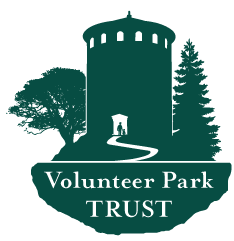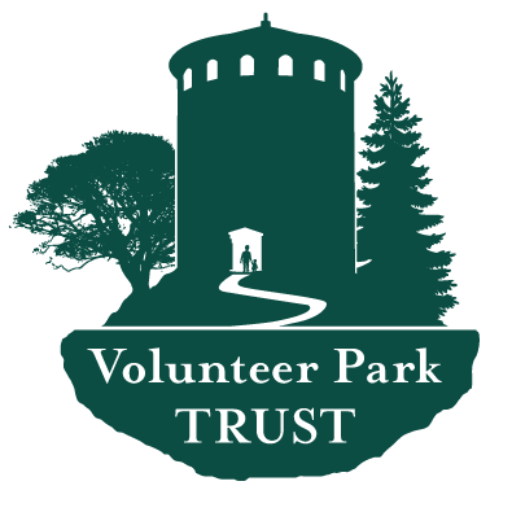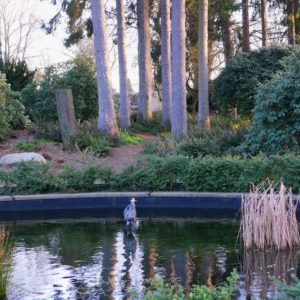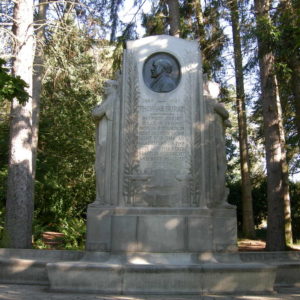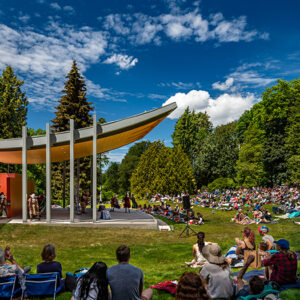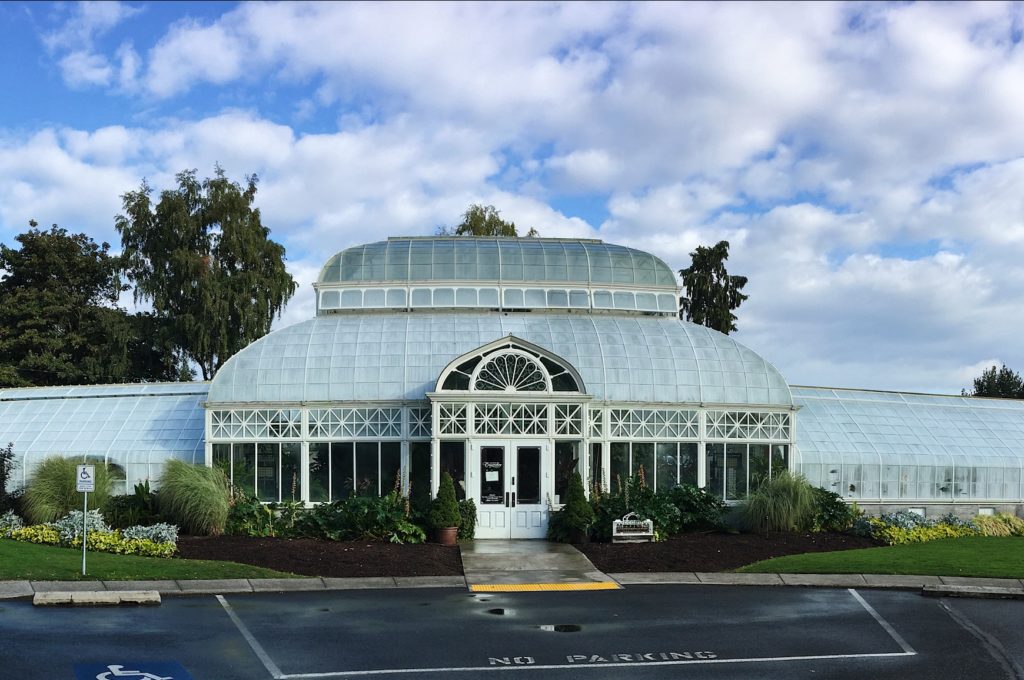
Though it has been substantially renovated over the years, the Volunteer Park Conservatory building retains its original appearance as a Victorian iron and glass conservatory. It is operated by the Friends of the Volunteer Park Conservatory in partnership with Seattle Parks and Recreation.
Constructed in 1912 from a pre-fabricated kit from the Hitchings Company of New Jersey. It consists of five rooms. The domed section at the center is the Palm House. Not long after the conservatory was erected, Anna Clise donated her orchid collection. This formed the nucleus of the orchid collection and inspired others to make similar donations. Fern House and Bromeliad House are on the west. To the east, the Seasonal Display House is now located where the original Cyclamen House was found. The east wing also holds the Cactus House. The distinctive window over the front entry is known as a lunette, or peacock, window and is original to the building.
Though it has been substantially renovated over the years, the building retains its original appearance as a Victorian iron and glass conservatory. It is operated by the Friends of the Volunteer Park Conservatory in partnership with Seattle Parks and Recreation.
The Seward statue in the center of the traffic circle in front of the Conservatory was first placed at the University of Washington campus for the 1909 Alaska-Yukon-Pacific Exposition. It honors William Henry Seward, who was the Secretary of State responsible for the purchase of Alaska from the Russians. The statue was moved to Volunteer Park after the exposition was over in the fall of 1909. It was the first of many memorials and monuments in the park.
Other things to see at the park
Lily Ponds
Two lily ponds flank the terrace along the west side of the Concourse.
The Burke Memorial
Judge Thomas Burke was an important civic leader in Seattle.
The Amphitheater
The performing arts have been part of Volunteer Park’s history since the first concert grove was constructed in 1910.
